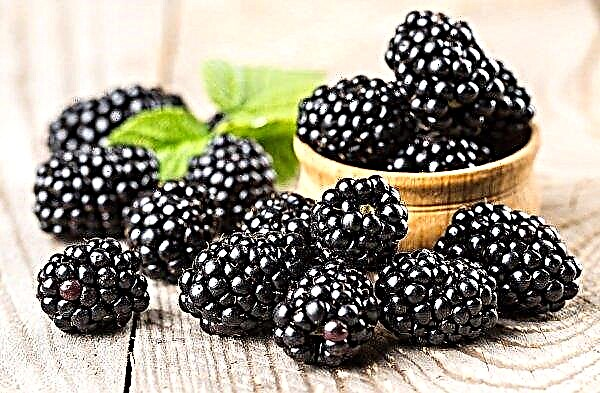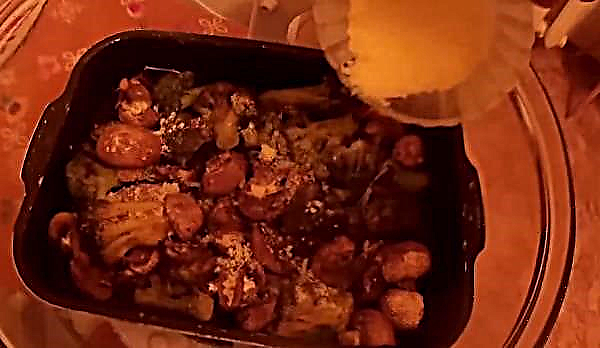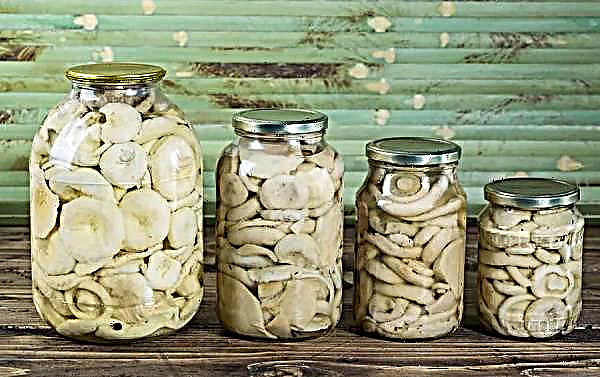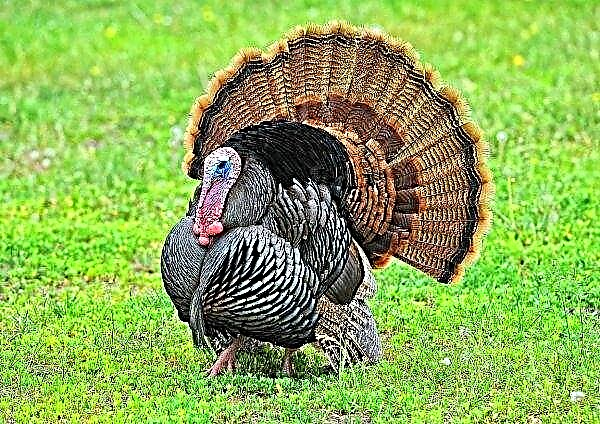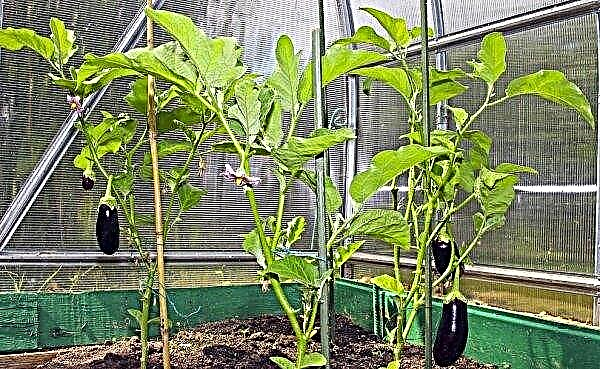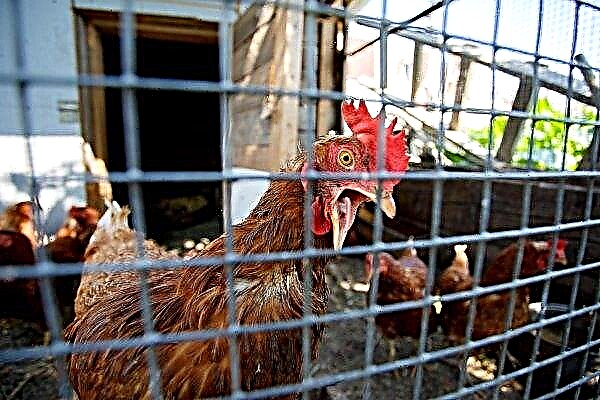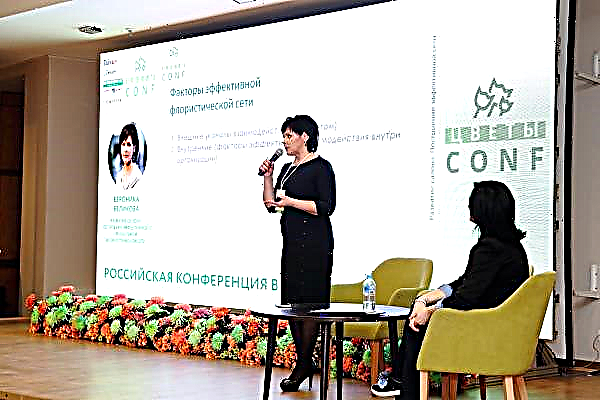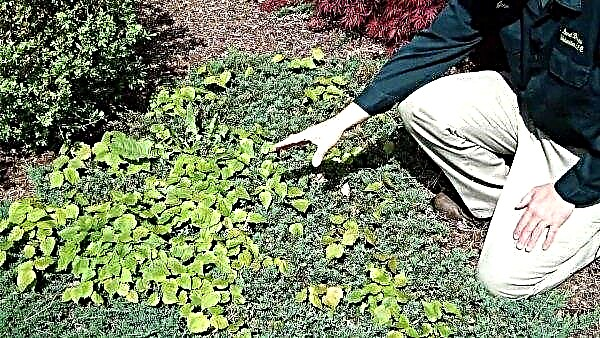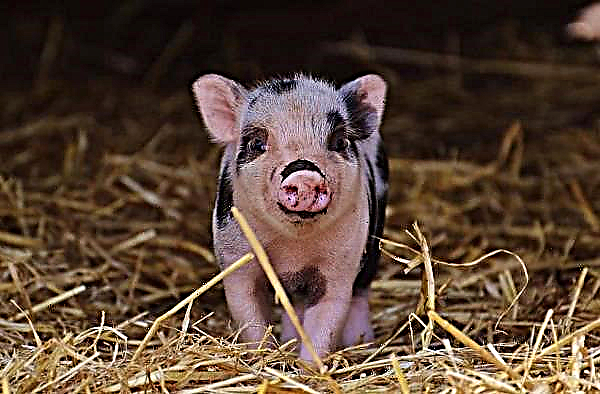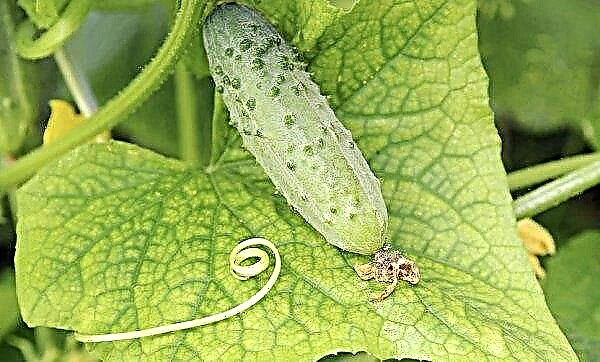The acquisition of a color broiler is considered to be an excellent investment, since in addition to their good egg production, these chickens are able to quickly gain live weight. In this article we will take a closer look at the popular breeds of color broilers and their basic physiological qualities.
Breeds of color broilers and their descriptions
It is impossible to overestimate the dignity of these birds. They are distinguished from ordinary chickens by an intensive mass gain, which, in turn, is a valuable fact for most breeders. Such chickens are perfect for growing both on a personal farm and on an industrial scale.
Did you know? Queensland resident Ronald Aldridge managed to grow a whitsulli rooster 43.2 cm high. The Australian managed to feed the bird to a mass of 10.36 kg.
Broilers have high egg production. This indicates that after 2-3 months the cost of buying birds can pay off. To obtain individuals with rooted growth and dietary meat, breeders cross these birds with other valuable breeds. There are many breeds of color broilers that differ from each other in different characteristics. In this regard, it is worth considering each breed in more detail.
Foxy chick
Foxy Chick chickens are great for growing at home.
The main characteristics of the breed speak in their favor:
- quickly gain weight, the optimal weight is reached on the 45th day;
- egg production per year is 250 pieces;
- large eggs weighing about 70 g;
- an adult rooster weighs up to 7 kg, and a laying hen - 4 kg.
Naked neck
This breed of color broilers is perfect for the harsh climate of our country. Representatives of the Naked Neck have a large sternum, a broad back, long legs and a large erect scallop. Chickens have a restrained character and get along well with other birds. Plumage of a carcass of a Naked Neck - various color shades. The main difference, as the name implies, is the absence of feather cover on the neck.
Important! The Naked Neck breed is very difficult to reproduce in a natural way, so farmers should purchase already hatched chicks.
This species is especially popular in European countries such as Hungary, Moldova and France. Due to its funny appearance, the breed is not in great demand in our country so far. The taste of meat resembles turkey, so it is of value to gourmets. The weight of roosters is up to 3.5 kg, and chickens - on average 2.5 kg. Productivity of 1 laying egg is up to 180 medium-sized eggs.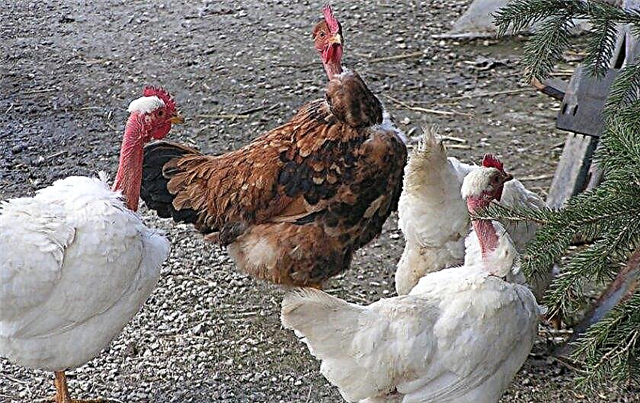
Broiler Sasso
Sasso is a meat breed with an intensive growth rate, which was brought by French breeders. Due to the structure of their feather, these birds calmly tolerate frosts. The hens in their mass reach up to 4 kg, and the males - up to 5 kg. For 1 year, a laying hen is able to give up to 120 eggs, which is not a good indicator.
If you need fast poultry turnover and saving feed, then the livestock can be sent for slaughter already at 2 months of age. By this age, young animals gain more than 2 kg of live weight. The birds of this breed need a free range and can be kept in a simple wooden shed.
Master gris
French breeders bred Master Gris as a meat-and-egg breed. The color of the feathers is gray-white, the body is larger. The average weight of a rooster is up to 7 kg, and laying hens - 5 kg.
A significant advantage of the breed is the quality of the meat, which, in turn, is tender and contains a small amount of fat. At 4 months, young individuals reach puberty, and egg production ranges from 200 to 300 eggs per year.
Features of growing and maintaining color broilers
The main advantage of these birds is their excellent adaptation to various climatic conditions. The basic rule of growing colored birds is daily care and proper feeding. To get good productivity, you should adhere to the advice and recommendations of experienced poultry farmers. To preserve the livestock in the winter, it is necessary to create a normal temperature regime, and for this it is necessary to organize the heating of the bird's place of residence.
Places to keep
For chickens use the following types of breeding:
- outdoor with walking
- in the houses
- in cages with metal mesh on the floor.
The place for the content must be determined and prepared in advance. It should be borne in mind that young individuals do not need long walks. Walking for hens must be fenced. In addition, when rearing young animals, you cannot accumulate many birds in a small area.
Microclimate
Adult broilers are unpretentious to temperature fluctuations. But in the locations of young animals, it is best to maintain the optimum temperature + 25 ° C. The best temperature regime for the full growth and development of livestock should be from +15 to + 25 ° С. But do not forget that the temperature in the room should not fall below + 5 ° C.
Did you know? The rarest chickens are called the ha ha dong tao breed. In Vietnam, it is considered a delicacy, as it has only 300 goals. The weight of each bird is 4.5–7 kg, depending on gender.
Broiler Care
The broiler brood hen needs to be kept in warm rooms, otherwise part of the chicken’s energy will be spent on heating the body. To avoid this, all drafts in the room should be eliminated and all holes in the barn should be closed. It is advisable to insulate the floor of the shed with shavings, peat or sawdust, which will contribute to the absorption of excess moisture.
Like other chickens, broilers can suffer from various infectious diseases. To avoid this, pets need to be vaccinated on time and regularly fed with the necessary vitamins, adding them to the nutrient mixture.
Feeding
Adhering to the correct diet, you can achieve excellent results in breeding broiler chickens. For this purpose, fodder is sold on the agricultural market containing the right amount of nutrients, vitamins and trace elements for the active growth of birds. Factory feeds may also contain medicinal components that can enhance bird immunity to protect against many diseases.
Young animals
From the first days of life, it is best to feed chickens with compound feed. Not every breed of colored broiler can be grown only on food waste or grain. For active growth and gaining the required mass, young animals are recommended to be fed a balanced diet. From the age of 7 days, chickens should begin to be accustomed to natural products and, if necessary, introduce crushed grain into the "menu". Corn and wheat are added to the diet of young meat hybrids for better weight gain.
Gradually, chickens begin to eat vegetables and greens, which over time should make up half the diet of birds. For stable growth, chicks are given yeast, dairy products, in particular cottage cheese. When feeding young animals, it is recommended to adhere to such a schedule: the first 10 days - every 2 hours, until the 45th day - every 3 hours, and then - every 4 hours.
Adults
Adults should be fed according to a predetermined schedule, but at least 3 times a day.
The main diet should consist of the following components:
- cereal based feed;
- worms and maggots - 2-3 times a week;
- food waste;
- fruits and vegetables - raw or after heat treatment;
- greens and grass.
Adult broiler food can also be prepared on your own.
Important! It is not recommended to use buckwheat and rice as a feed for broilers. These cereals must be given exclusively in boiled form, as they are able to get stuck in chicken goiter.
To do this, you should take such products in the following proportions:
- corn - 400 g;
- wheat grain - 200 g;
- oats - 100 g;
- barley - 50 g;
- cottage cheese - 200 g;
- fish or meat and bone meal - 60 g;
- food yeast - 2 g.
 All these ingredients must be thoroughly mixed, preferably with whey, yogurt or drinking water. Depending on age, the mixture is given at the rate of 10–40 g per 1 chicken. Regularly monitor the condition of the drinkers. The water in them should always be fresh - its low quality, as well as its absence, can lead to intestinal disorders. In severe frosts, drinking water should be slightly warmed up.
All these ingredients must be thoroughly mixed, preferably with whey, yogurt or drinking water. Depending on age, the mixture is given at the rate of 10–40 g per 1 chicken. Regularly monitor the condition of the drinkers. The water in them should always be fresh - its low quality, as well as its absence, can lead to intestinal disorders. In severe frosts, drinking water should be slightly warmed up.Disease prevention
No one is safe from health problems, not even a stock of colored broilers. A certain percentage of chickens will die anyway. To prevent ailments, young animals need to be vaccinated. If there is a suspicion of a mass disease, then you should immediately consult a veterinarian.
In the habitat of the livestock, it is always necessary to maintain cleanliness, as well as to avoid drafts. If the livestock is still cold, then you can use a drug such as Metronidazole, observing the following dosage: 10 mg of the drug per 1 kg of live weight. In order to avoid foot diseases, chickens should be given calcium preparations. And for an active set of body mass, fresh fish should be included in the diet of birds.
Possible growing problems
When breeding broilers of different breeds, you can encounter 2 main problems that are associated with the state of health:
- lameness;
- stunted growth.
The first problem arises from poor quality feed. In this case, the “menu” of birds needs to be diversified with chalk, bone meal or eggshell. In addition, the disease can cause mold in places of detention. For this, the walls of the room must be treated with an antiseptic, and also equipped with ventilation. Young individuals suffer from stunting due to improper maintenance. It should be remembered that the correct temperature regime is necessary for the active growth of birds. As a feed, it is desirable to use mixtures with a high protein content, which contribute to an active metabolism in the organisms of chickens.
Young individuals suffer from stunting due to improper maintenance. It should be remembered that the correct temperature regime is necessary for the active growth of birds. As a feed, it is desirable to use mixtures with a high protein content, which contribute to an active metabolism in the organisms of chickens.
Did you know? The meat of the Bress Galskaya breed is considered the most delicious in the world. These birds have been raised in the French province of Bresse and have been marked with the “quality mark” since 1957.
So, in order to grow color broilers with minimal losses or without them at all, it is recommended to observe all the necessary conditions for their maintenance. Only by choosing a suitable place for keeping birds, a diet for young animals and adults, as well as conducting timely disease prevention, you can get the desired result.

